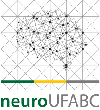Banca de QUALIFICAÇÃO: DÉBORA STERZECK CARDOSO
Uma banca de QUALIFICAÇÃO de DOUTORADO foi cadastrada pelo programa.STUDENT : DÉBORA STERZECK CARDOSO
DATE: 25/07/2023
TIME: 14:00
LOCAL: Sala 211 do Bloco Zeta do Campus de São Bernardo do Campo da Universidade Federal do ABC
TITLE:
PHOTOBIOMODULATION THERAPY: HIPPOCAMPAL CELL DEATH AND NEUROINFLAMMATION MODULATION AFTER PERINATAL ASPHYXIA
PAGES: 68
BIG AREA: Ciências Biológicas
AREA: Morfologia
SUBÁREA: Citologia e Biologia Celular
SUMMARY:
Perinatal asphyxia is a worldwide public health problem characterized by the inability to initiate or maintain spontaneous breathing at or after birth, and the clinical manifestation is called hypoxic-ischemic encephalopathy. Currently, therapeutic hypothermia is the only therapy available to minimize sequelae; however, the benefit of therapeutic hypothermia is not well elucidated and is not permitted in premature infants, a population particularly susceptible to perinatal asphyxia. Photobiomodulation therapy (PBMT) is a potential candidate to promote biological, non-thermal, noncytotoxic reactions via photochemical or photophysical events. PBMT produces beneficial effects due to the absorption of light photons, especially in the red and near infrared (NIR) and has been considered a promising treatment for acute or chronic neurodegenerative processes. This work proposes to elucidate whether PBM could exert therapeutic effects on acute and long-lasting deficits of the hippocampus promoted by a perinatal asphyxia model in 1-day-old rats, when rodents’ central nervous system development is comparable to preterm human neonates, as well as the immunomodulatory effects of asphyxia and PBMT. Our results showed that singledose PBMT prevented cell loss and attenuated reactive gliosis in the hippocampus after perinatal asphyxia. Furthermore, PBMT potentiated the retraction of microglial branches and led to an amoeboid morphology, compatible with activated microglia. Interestingly, we identified a decrease in specific cytokines imposed by asphyxia that was not reversed by PBMT, although the correlations between the levels of cytokines altered by asphyxia were rebalanced. Taken together, our results shed light on the therapeutic potential of photobiomodulation for perinatal asphyxia.
COMMITTEE MEMBERS:
Presidente - Interno ao Programa - 1771857 - CARLOS ALBERTO DA SILVA
Membro Titular - Examinador(a) Externo à Instituição - RODRIGO LABAT MARCOS - UNINOVE
Membro Titular - Examinador(a) Externo à Instituição - NÚBIA MANTOVAN FARDIN - UNIP
Membro Suplente - Examinador(a) Interno ao Programa - 1872537 - MARCELA BERMUDEZ ECHEVERRY
Membro Suplente - Examinador(a) Interno ao Programa - 1675707 - FULVIO RIELI MENDES




